Why isn't there one standard?

Welcome to the August edition of the Open Home Foundation newsletter, the place to learn about the latest and greatest things for your smart home that improve its privacy, choice, and sustainability.
The Open Home newsletter is written by Paulus Schoutsen - President of the Open Home Foundation, and founder of Home Assistant. Was this email forwarded to you? Subscribe here!
August is drawing to a close, and for many of us, that means the end of summer holidays and a shift back into our regular routines. This month, we were busy launching our latest product: the Home Assistant Connect ZWA-2. The community's reaction has been incredible, but the launch has also brought a familiar question back to the forefront: with all these standards, why can't we just have one?
In this newsletter, I want to tackle that question head-on. I’ll explain why having a variety of open standards is actually a huge benefit for everyone, fostering innovation and preventing the kind of e-waste and vendor lock-in we all despise. We’ll dive into why we’re doubling down on standards like Z-Wave, and why a single-standard world isn't the utopia it might seem.
Are there too many?
I’ve heard it a million times, people expressing their frustration that there are too many different ways to connect devices. Asking the very valid question of why can’t we all just settle on the biggest or newest standard. Inevitably, when an industry body announces a new standard to connect devices, we’re usually met with this classic XKCD comic,
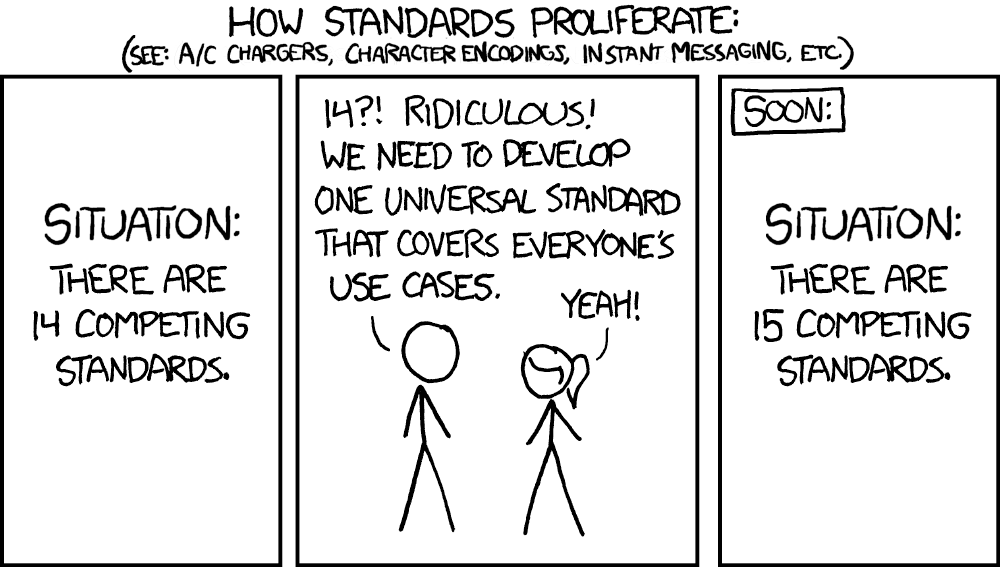
I will always agree that there are too many closed systems for connecting smart devices… one is too many! But when it comes to open standards — standards that are well-documented and are open to any organization to participate in — I feel there’s room for a good variety of them.
Let’s just imagine the industry did settle on one, how would that play out? An obvious candidate could be Matter: it’s finally hitting its stride, has some huge brands supporting it, Home Assistant is Matter certified, and it has some big advantages over other standards (more on that below).
Every manufacturer starts switching devices over to Matter, and we all live happily ever after… except for people who live in homes with terrible 2.4GHz performance (the radio spectrum most Matter devices rely on), or live in markets where these devices are still prohibitively expensive.
Some brands would use this as an opportunity to discontinue and cease updates for their hubs that connect with other standards. They would inevitably aggressively push their customers to upgrade their “old”, but still working, devices to their supported product lines. This causes a tidal wave of e-waste (and people moving over to Home Assistant as *spoiler alert* we’ll always work to keep standards supported). I like Matter, and its future is undoubtedly promising, but as it stands, no single standard can fit every smart home.
What's special about the smart home
The smart home is different from something like the mobile computing space, where people update their devices at a much faster pace. Wi-Fi could become the singular standard for laptops and mobile phones, as people upgrade every few years. When you install a light switch, you expect to use it for decades, and this leads to long-lived standards.
What’s more, there are multiple standards co-existing and thriving, because they all have their own unique advantages. To a certain degree, these standards compete with each other, and because of this, they’re continuously improving, which benefits consumers. Here’s a showdown of a couple of the most notable standards,
Home Assistant supports every one of the biggest open standards, and supports countless other standards (Modbus, 433 MHz, KNX, and many more). The more we support, the greater the chance that we’ll keep more devices working longer. People are still using 1970s smart home technology with Home Assistant!
Hundreds of competing standards are overkill, but one is just not feasible in the real world. We need a mix of good open standards, and that’s why the Open Home Foundation puts so much effort into providing industry-leading support for these standards.
Z-Wave reborn
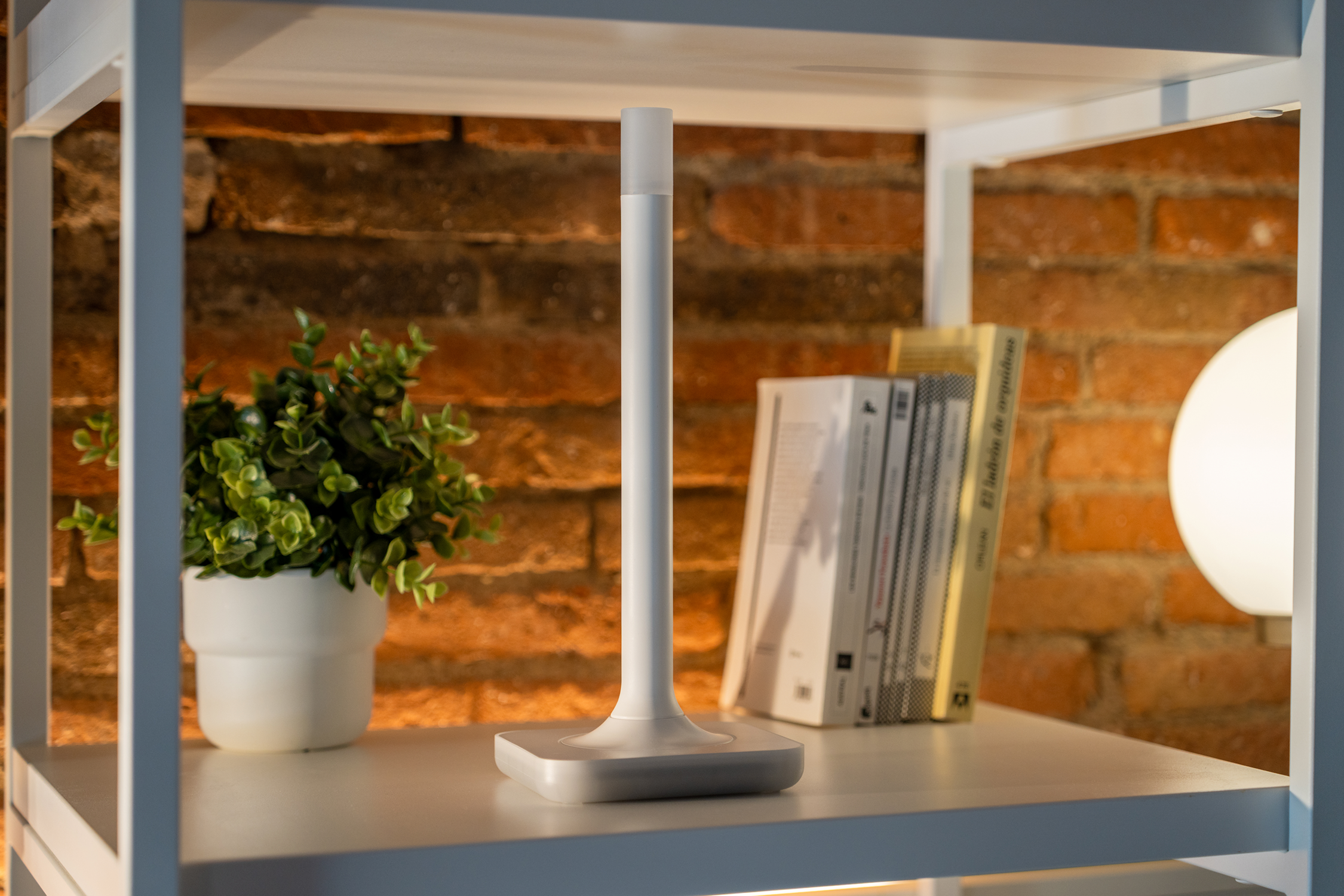
In our quest to provide the best support possible to every major open standard, we have our Connect line of products. This hardware line started with our Connect ZBT-1, a USB adapter that allows Home Assistant to effortlessly connect Zigbee or Thread devices. We have now launched the first in a long line of second-generation Connect devices, Home Assistant Connect ZWA-2. Being the second generation, it's all about having the most performant and open design.
Connect ZWA-2 is the ultimate way to connect any Z-Wave device to Home Assistant. The antenna and base are precisely tuned to Z-Wave’s ideal wavelength; they work in harmony to provide a reliable connection and maximize range. The community has been sharing its results, and people are connecting devices in parts of their houses (and beyond) that were not previously possible. It also supports the newest revision of the standard, Z-Wave Long Range, which pushes the range further, while making for more responsive devices with better battery life. Basically, if you’ve ever had range and reliability issues with your smart home, I urge you to check out Connect ZWA-2!
We designed the hardware alongside our commercial partner Nabu Casa, who meticulously engineered the antenna and ensured its fit and finish was perfect. At the Open Home Foundation, we have one of the foremost experts in Z-Wave, Dominic (also known as @AlCalzone, the founder of Z-Wave JS). He’s been working tirelessly to level up Home Assistant’s support of Z-Wave, and the whole team made sure Connect ZWA-2 was tightly integrated with it. This allows for super-easy migrations from older adapters to Connect ZWA-2, and one-click firmware updates.
Home Assistant Connect ZWA-2 is living proof of our commitment to Z-Wave. The Connect line will continue expanding, providing the easiest way to connect a range of standards.

This month in the news
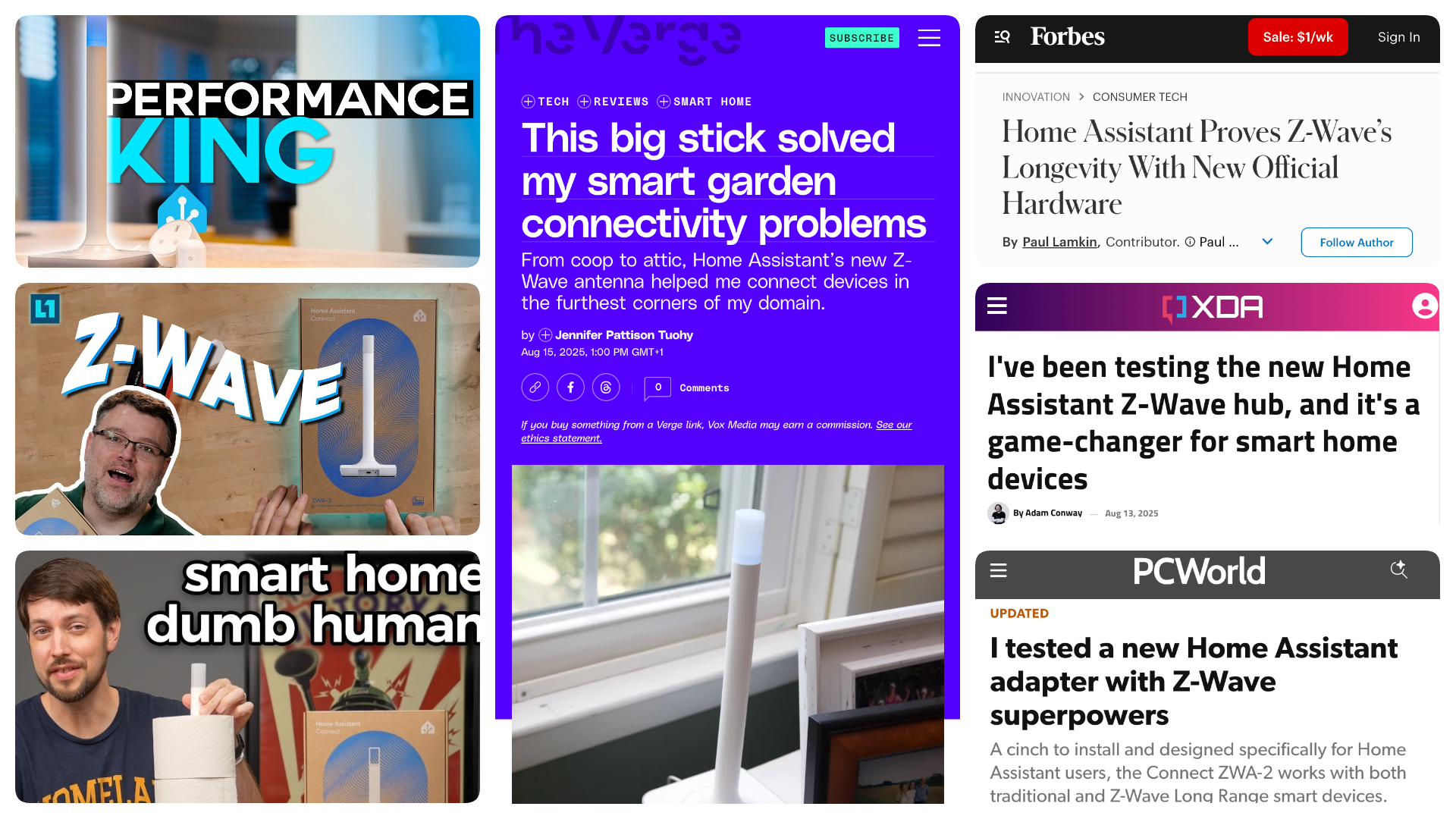
As we released our Home Assistant Connect ZWA-2, the news cycle has been dominated by headlines and videos about how it is bringing amazing range and reliability to the smart home.
- Everything Smart Home gives some amazing range tests
- Level1Techs praised our community-driven ethos
- Jeff Geerling was able to connect a not-spot in his home
- It helped Verge writer Jennifer Pattison Tuohy connect her chicken coop 🐓
- Forbes remarked on us breathing new life into Z-Wave
- XDA called it a game-changer
- PC World says it has superpowers
There were countless other videos and articles in various languages. It’s amazing to see so many organizations understand the importance of this work!
Berlin Meetup
A bunch of Open Home Foundation people and Works With Home Assistant partners will be in Berlin for IFA, and we weren’t going to waste this chance to meet up with our German community! So we’re hosting a meetup in Berlin on Saturday, September 6th! I won’t personally make it, but I don’t think you’ll be disappointed by the turnout. Register before spaces run out!

Your monthly AI in the home update
What do you do when you can’t monetize your product any other way… fill it with ads. Amazon CEO Andy Jassy wants to put ads in your Alexa+ conversations (Maxwell Zeff, TechCrunch) to help sell products to you. I’m guessing that the $20/month doesn’t cover the server costs of AI. Unfortunately, the reviews keep coming, and even with all these AI servers chugging away, Kevin Roose of The New York Times still concludes, “Alexa+ is too buggy and unreliable for me to recommend.”
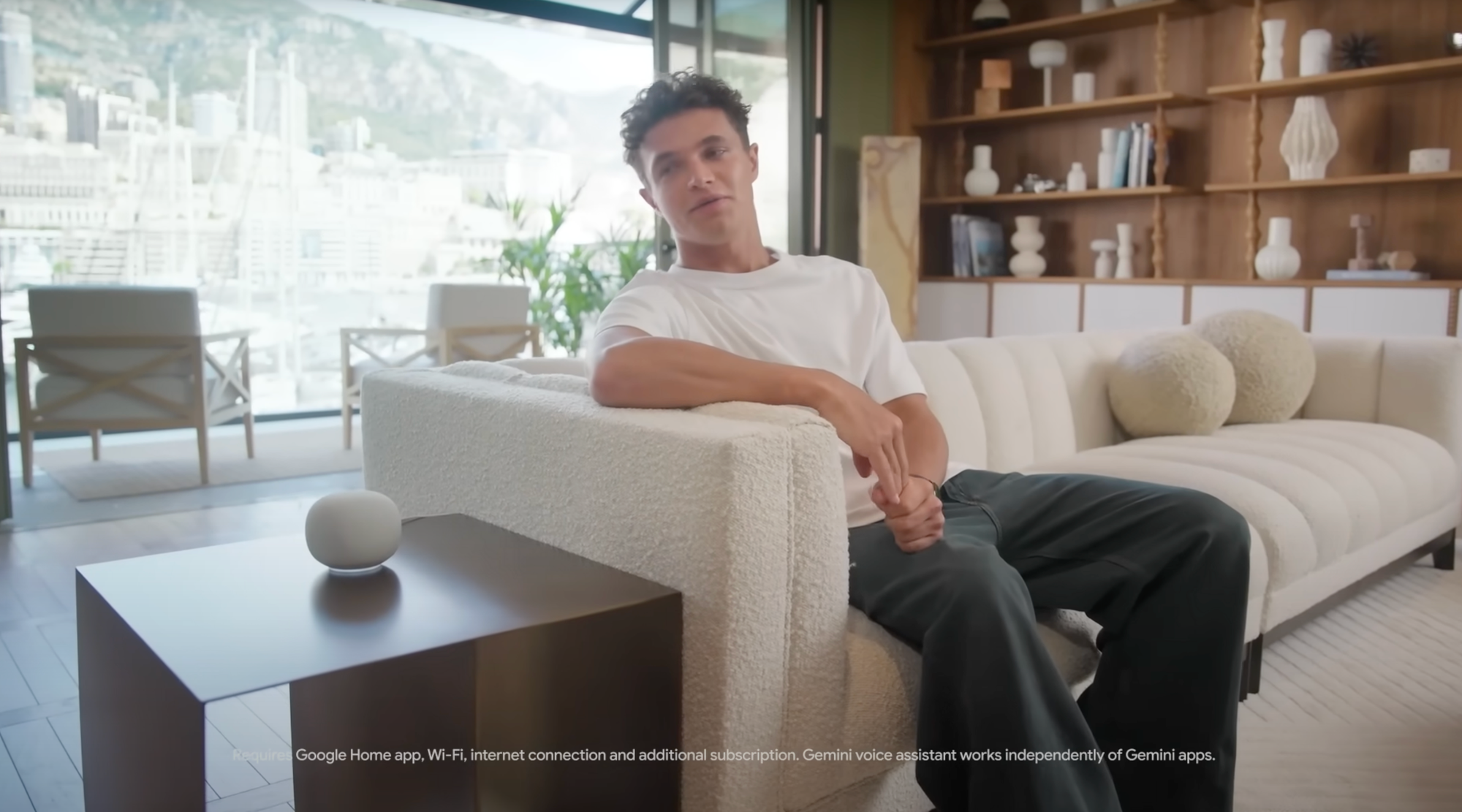
Google had a big star-studded event this month, Made by Google 2025. There were some generally cool-looking AI technologies showcased, and even though they only devoted a small portion of the event to the smart home, they’ve finally laid out their plans for AI in the home (Abner Li, 9to5Google). They’ll be bringing “Gemini for Home” to their smart speaker line-up, with early access starting in October. It will have free and paid tiers, and should allow users to make more complex media and smart home control queries. It seems more focused on natural language and continued conversation (Google blog), which are all things you can use in Home Assistant today!
AirGradient joins Works With Home Assistant
We are thrilled to welcome AirGradient to Works With Home Assistant, as their deep commitment to open-source hardware and software perfectly aligns with our own values. Their indoor and outdoor air monitors embrace the principles our community really loves, including local control and a focus on repairability. From their roots in helping a local community in Thailand to supporting global open data projects, AirGradient embodies the spirit of community-driven innovation we love to champion.
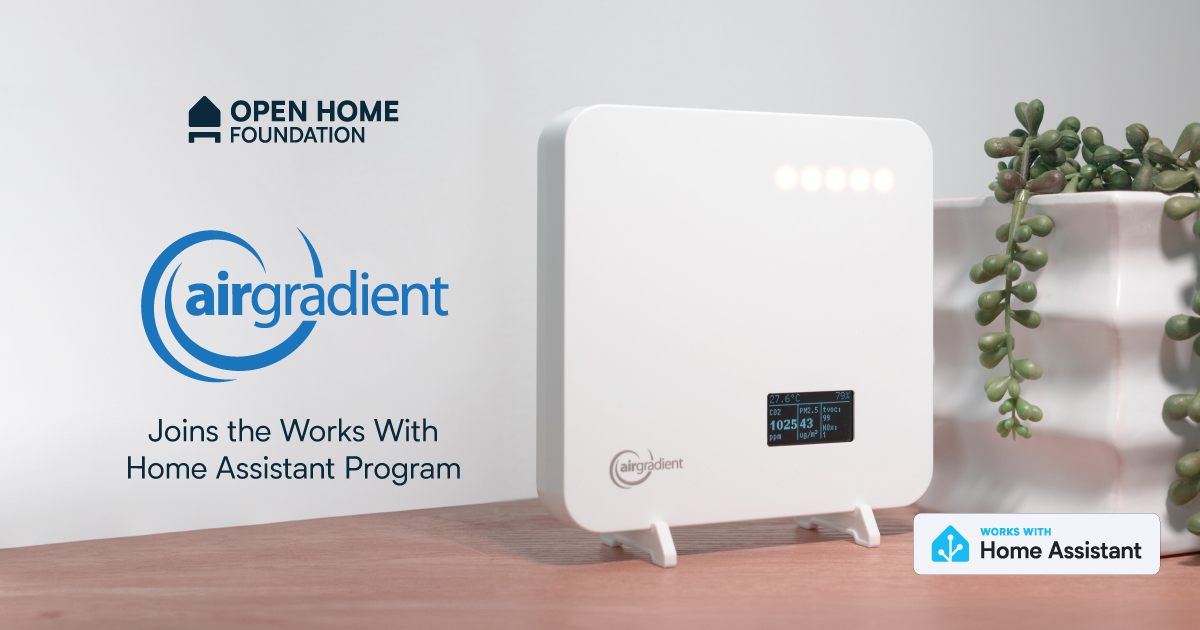
What’s new in Home Assistant 2025.8
The summer of AI is here with our 2025.8 release, which introduces powerful new AI Tasks to integrate AI analysis directly into your automations! We've also packed this update with fantastic user experience improvements, like the ability to control individual devices within a group and a beautiful new energy flow visualization for your energy dashboard.
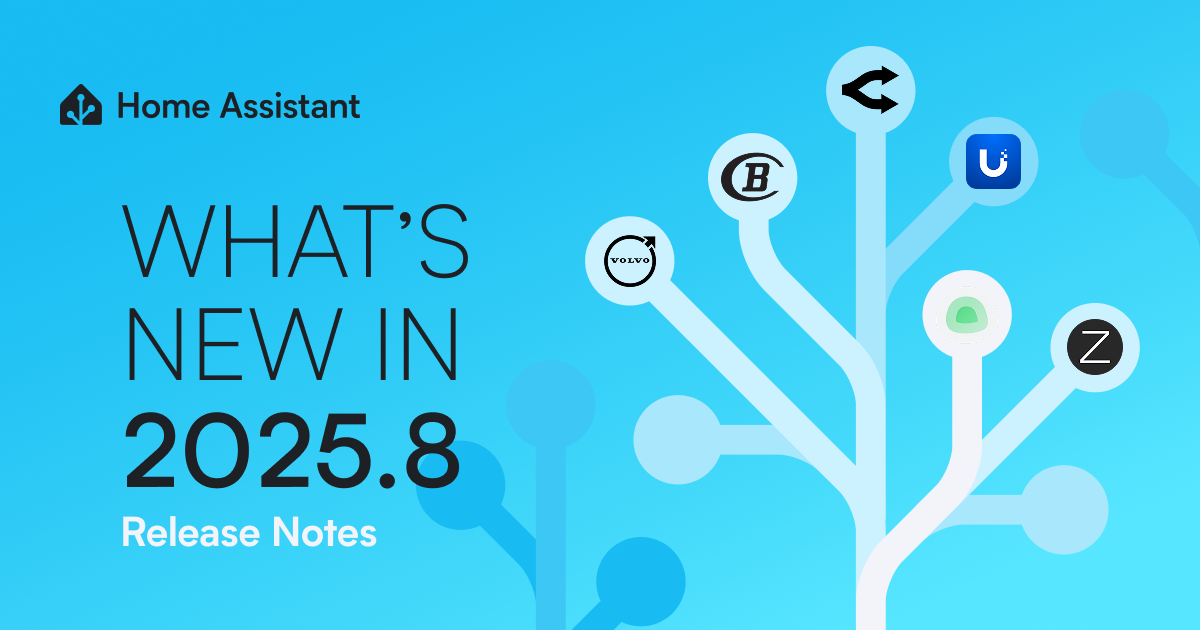
Community highlights
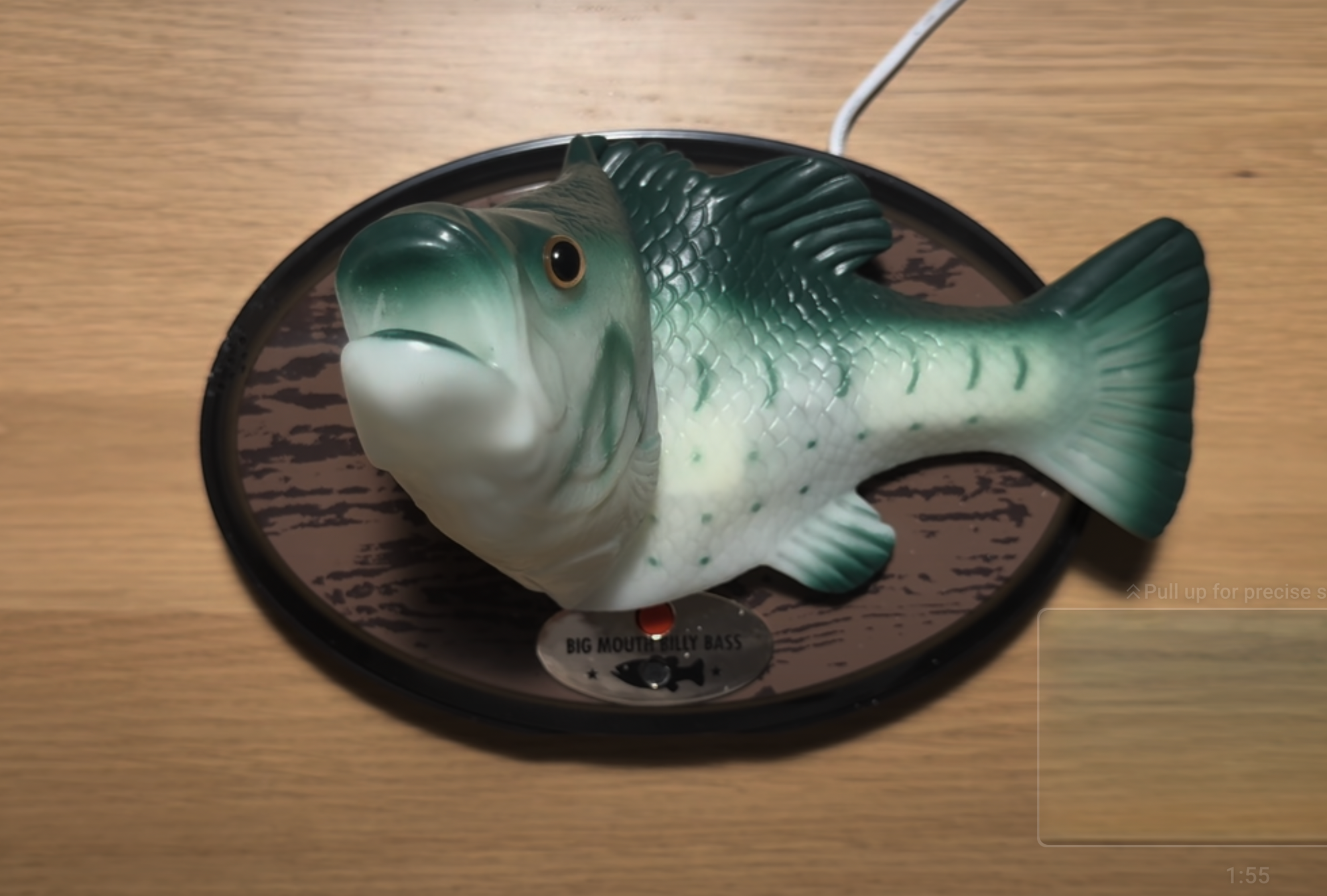
I know it doesn’t seem possible but u/Thokoop's talking bass just keeps getting better, hitting version 1.4! It now works with MQTT for announcements. Tony Soprano will be dreaming about this one!
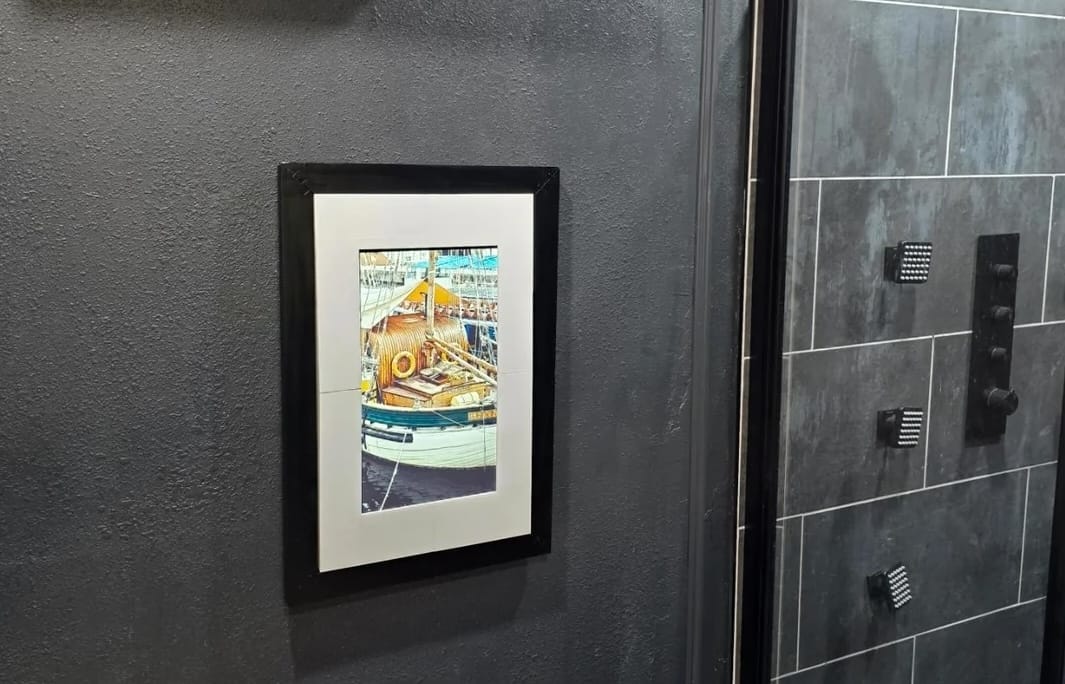
For all of us still in the stone age with our dumb showers, u/Monokside has created a shower that tells you when it's at temperature and gives some handy controls and stats.
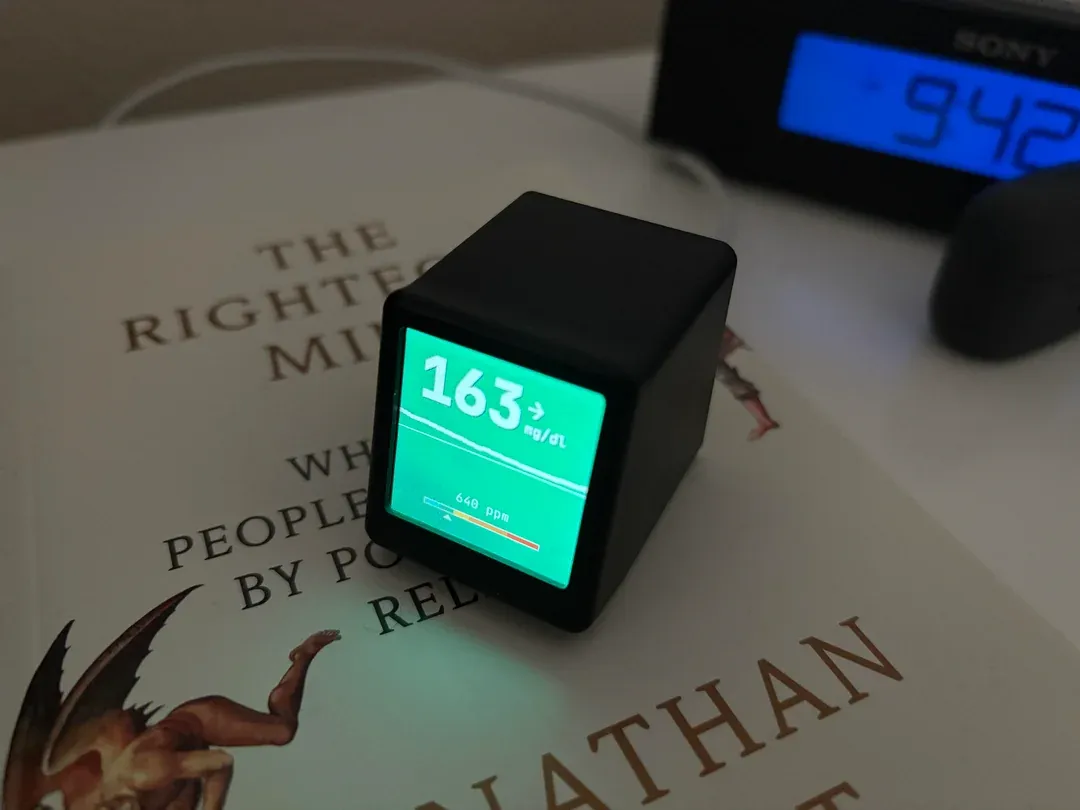
u/wizzyfx has connected their Libre glucose sensor to a custom display and a color-changing light for instant, at-a-glance alerts on their sugar levels.
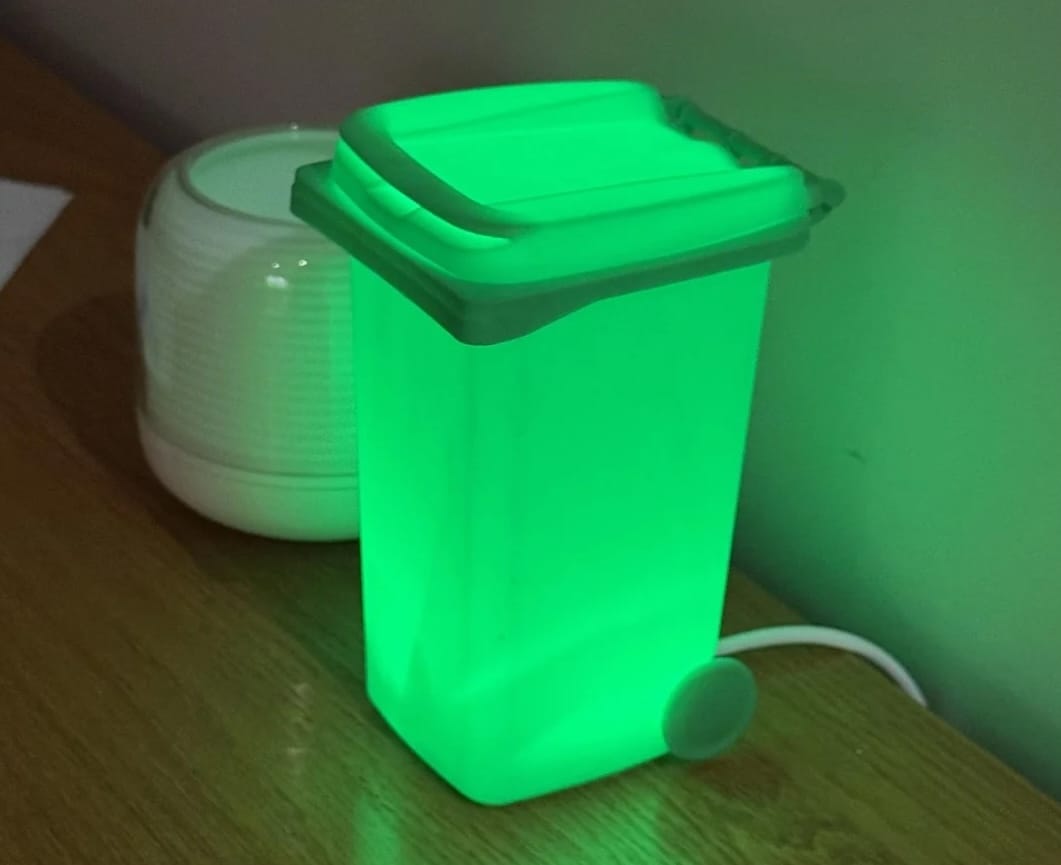
This is the reason to get a 3D printer, so you can make a little light-up garbage can. u/deanfourie1 has put an LED in it to remind them when it's recycling week.
Enjoy this newsletter?
Support the Open Home Foundation, subscribe to Home Assistant Cloud
Forward to a friend, sharing is caring.
Anything else? Hit reply to send us feedback or say hello. We read everything!
|











